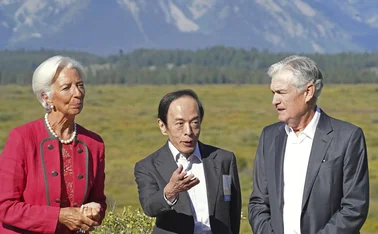
The BoJ’s risky yield curve control experiment
Current objectives are muddled, writes former policy board member

The Bank of Japan (BoJ) made a fundamental change to its quantitative and qualitative monetary easing (QQE) in September 2016 by adopting yield curve control. This was a clear departure from the volume-centred easing framework and represented the official abandonment of monetary base control. Meanwhile, the BoJ also made it clear that its intention was to continue the ongoing pace of about ¥80 trillion ($717.5 billion) a year on Japanese government bond (JGB) purchases.
The resultant
Only users who have a paid subscription or are part of a corporate subscription are able to print or copy content.
To access these options, along with all other subscription benefits, please contact info@centralbanking.com or view our subscription options here: subscriptions.centralbanking.com/subscribe
You are currently unable to print this content. Please contact info@centralbanking.com to find out more.
You are currently unable to copy this content. Please contact info@centralbanking.com to find out more.
Copyright Infopro Digital Limited. All rights reserved.
As outlined in our terms and conditions, https://www.infopro-digital.com/terms-and-conditions/subscriptions/ (point 2.4), printing is limited to a single copy.
If you would like to purchase additional rights please email info@centralbanking.com test test test
Copyright Infopro Digital Limited. All rights reserved.
You may share this content using our article tools. As outlined in our terms and conditions, https://www.infopro-digital.com/terms-and-conditions/subscriptions/ (clause 2.4), an Authorised User may only make one copy of the materials for their own personal use. You must also comply with the restrictions in clause 2.5.
If you would like to purchase additional rights please email info@centralbanking.com test test test








